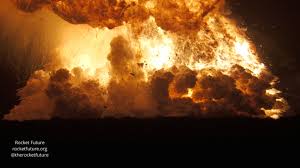SpaceX’s massive Starship spacecraft exploded into a fireball during testing in Texas late Wednesday, June 18 marking another setback for Elon Musk’s ambitious plan to send humans to Mars.
The explosion occurred around 11 p.m. local time at the company’s Starbase facility in Brownsville, Texas, where the rocket was being prepared for its tenth test flight. SpaceX confirmed the incident in a post on X (formerly Twitter), describing it as a “major anomaly” and assuring that all personnel were safe.
Musk later posted that preliminary data pointed to a failure in a nitrogen storage unit known as a Composite Overwrapped Pressure Vessel (COPV) located in the payload bay.
“Preliminary data suggests that a nitrogen COPV in the payload bay failed below its proof pressure,” Musk wrote. “If confirmed, this would be the first failure of its kind for this design.”
Videos circulating on social media showed at least two rapid explosions lighting up the night sky and scattering debris.
Standing 400 feet (122 meters) tall, the Starship rocket system is central to Musk’s long-term vision of colonizing Mars. However, the program has experienced a series of high-profile setbacks this year.
In May, a Starship vehicle lost control mid-flight, failing to achieve several key testing goals. Though it flew further than during previous attempts, the rocket eventually spun out of control and failed before completing its mission.
Back in March, another Starship exploded minutes after liftoff, prompting the U.S. Federal Aviation Administration (FAA) to temporarily suspend air traffic in parts of Florida due to falling debris. Videos from that incident showed fiery fragments streaking across skies over South Florida and the Bahamas after the spacecraft broke apart midair.
Following that mishap, the FAA concluded its investigation in early June, attributing the explosion to an engine hardware failure. SpaceX reportedly implemented eight corrective actions to address the issue before proceeding with the late May launch.
The Starship program also faced challenges in January, when another test flight ended in failure. The vehicle disintegrated over the Caribbean shortly after liftoff, with debris causing minor damage — including to a car in the Turks and Caicos Islands.
Despite repeated setbacks, Musk has continued to express optimism about Starship’s development, often calling the failures “learning experiences” essential to building a reliable deep-space transport system.
As of now, SpaceX has not provided further comment on the latest incident. The FAA is expected to conduct a fresh investigation before any additional test flights are cleared for launch.
